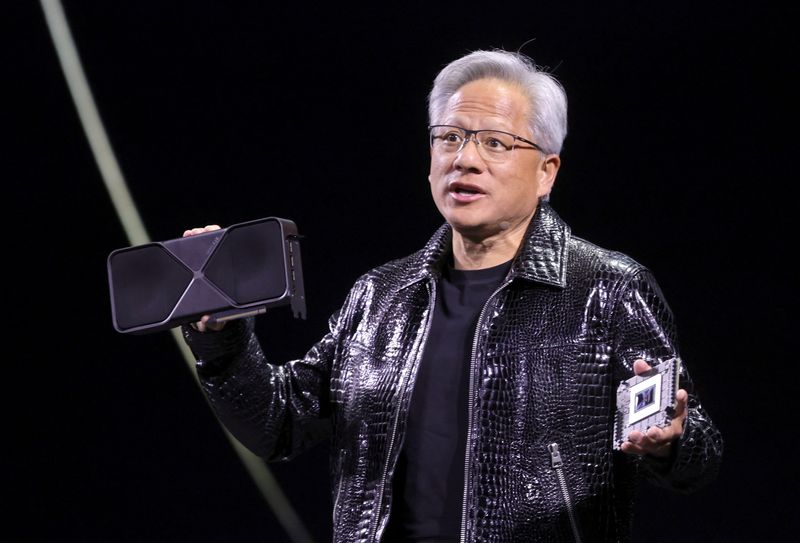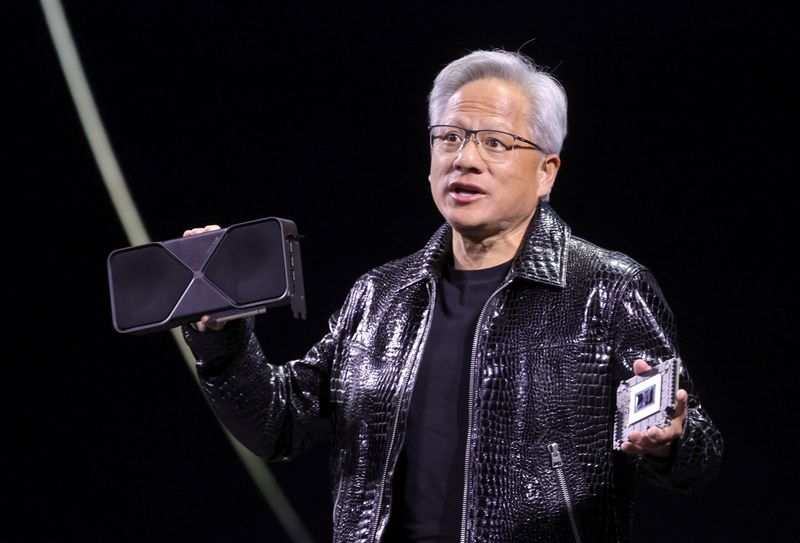## Is Nvidia’s Gaming Dominance About to Crumble?
For years, Nvidia has reigned supreme in the world of PC gaming. Their GPUs, the beating heart of every high-end gaming rig, have powered countless epic adventures and delivered breathtaking visuals. But a recent report from Yahoo Finance paints a worrisome picture: Nvidia’s gaming empire might be facing a major downturn.

A Battle for Budget Gamers
VRAM vs. Pricing: Exploring the Crucial Role of VRAM in Modern Gaming

In the realm of modern gaming, Video RAM (VRAM) has emerged as a critical factor determining performance, particularly at higher resolutions and with demanding graphics settings. VRAM acts as the dedicated memory for graphics processing units (GPUs), storing textures, frame buffers, and other visual data required for rendering complex scenes. A larger VRAM capacity allows the GPU to handle more data simultaneously, resulting in smoother frame rates, reduced stuttering, and improved visual fidelity.
The RTX 5060, Nvidia’s entry-level offering in the RTX 50 series, has been met with criticism for its meager 8GB VRAM allocation. This limited capacity falls short of the needs of contemporary games, especially those that leverage high-resolution textures and advanced visual effects. In contrast, AMD’s upcoming Radeon 9060 XT, launching on June 5th, will be available in both 8GB and 16GB VRAM variants. This strategic move by AMD directly addresses the VRAM capacity concerns plaguing the budget gaming segment.

The 9060 XT’s Advantage: Analyzing AMD’s Strategic Move to Offer a 16GB VRAM Option
AMD’s decision to offer a 16GB VRAM option for the Radeon 9060 XT positions it as a compelling alternative to the RTX 5060. For gamers seeking a budget-friendly upgrade with future-proofing in mind, the 16GB variant provides a significant advantage. This increased VRAM capacity will enable smoother performance in demanding games, especially at higher resolutions such as 1440p and beyond. For gamers operating on tighter budgets, the 8GB model still offers a competitive entry point, but the 16GB option undeniably appeals to those seeking long-term value.

The Future of Mid-Range: Predicting the Potential Impact of This GPU Battle on the Future Landscape of Mid-Range Gaming Performance
The rivalry between Nvidia and AMD in the mid-range GPU segment is heating up, with both companies vying for market share among budget-conscious gamers. The RTX 5060’s underwhelming performance and limited VRAM capacity present a golden opportunity for AMD to capitalize. The Radeon 9060 XT, especially the 16GB variant, has the potential to establish itself as the dominant force in the mid-range market. This competition will undoubtedly drive innovation and force Nvidia to respond with improved offerings in the future.
Beyond the Drivers: Nvidia’s Gaming Future
Blackwell AI and RTX 50 Series: Examining Nvidia’s Commitment to Gaming with its New AI-Driven Technologies
Despite the challenges faced by its entry-level offerings, Nvidia remains committed to pushing the boundaries of gaming technology. The company’s RTX 50 series GPUs are equipped with Blackwell AI, a suite of advanced AI-powered features designed to enhance visuals and elevate the gaming experience. Blackwell AI focuses on improving various aspects of game rendering, including:
- Shader Enhancements: Generating more realistic textures and surfaces, adding finer details and imperfections to create a more immersive visual experience.
- Real-Time Ray Tracing: Simulating the behavior of light in a more accurate and realistic manner, resulting in stunning lighting effects and reflections.
- AI-Powered Upscaling: Using AI algorithms to upscale game resolution, delivering improved visuals at higher resolutions without requiring a substantial performance boost.
- Nvidia Omniverse: A platform for creating and experiencing shared 3D virtual worlds, enabling collaboration and interaction in realistic digital environments.
- Nvidia GeForce Now: A cloud gaming service that allows users to stream high-quality games to a variety of devices, eliminating the need for powerful hardware.
Nvidia’s investment in Blackwell AI showcases its dedication to driving innovation in gaming and pushing the limits of visual realism.
The Metaverse and Beyond: Discussing Nvidia’s Broader Vision for Gaming and Its Potential to Expand Beyond Traditional Console and PC Gaming
Nvidia envisions a future where gaming transcends traditional consoles and PCs, expanding into immersive virtual worlds known as the metaverse. The company is actively developing technologies and platforms to support this vision, including:
Nvidia’s commitment to the metaverse signifies its ambition to reshape the gaming landscape and create new opportunities for players, developers, and businesses.
The Road Ahead: Offering a Balanced Perspective on Nvidia’s Gaming Challenges and Opportunities, Considering Long-Term Implications for the Industry
While Nvidia faces challenges in maintaining its dominance in the gaming market, particularly with the emergence of strong competitors like AMD, the company’s long-term prospects remain bright. Nvidia’s commitment to AI-driven technologies, its expansion into the metaverse, and its strong brand recognition position it well for continued success in the evolving gaming landscape.
The rivalry between Nvidia and AMD is a driving force behind innovation in the gaming industry, ultimately benefiting gamers with access to increasingly powerful and immersive gaming experiences. The road ahead for Nvidia in gaming is paved with both challenges and opportunities, and its ability to adapt and innovate will determine its long-term success.
Conclusion
So, is Nvidia’s gaming dominance truly at risk? While the numbers paint a concerning picture for the titan of GPUs, it’s far too early to declare them dethroned. The article highlights several key challenges: the slowing demand for high-end gaming hardware, increased competition from AMD, and the potential impact of AI on the traditional GPU market.
These are serious concerns, but Nvidia isn’t sitting idle. Their strategic investments in AI, data centers, and even cloud gaming could very well pave a new path to success, one less reliant on traditional gaming hardware sales. The future will likely see a diversification of Nvidia’s portfolio, with AI taking center stage. This shift could reshape the gaming landscape, potentially leading to more powerful, AI-driven experiences. But it also raises questions: Will traditional gaming take a backseat? Will the rise of AI democratize gaming experiences or exacerbate existing inequality? Only time will tell. One thing’s for sure, the gaming industry is at a crossroads, and Nvidia’s journey will be a captivating one to watch.
The future of gaming, as we know it, hangs in the balance. It’s a future where technology marches forward at an unprecedented pace, blurring the lines between imagination and reality. Will Nvidia remain a leader, or will they be relegated to the history books? The answer lies not in the technology itself, but in the choices they make, the risks they take, and the stories they choose to tell. The game is on.